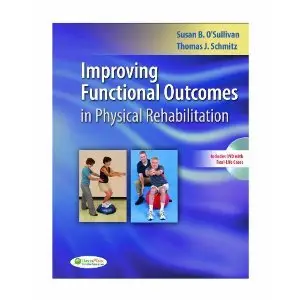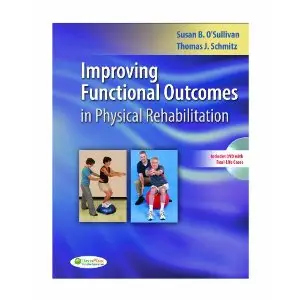Improving Functional Outcomes in Physical Rehabilitation
Susan B. O'Sullivan, Thomas J. Schmitz | ISBN:080362218X | 1st Edition | 2010 | PDF | 348 pages | 116 MB
Description:
Here is a practical, step-by-step guide to help you understanding the treatment process and to select the most appropriate intervention for your patient. Superbly illustrated, in-depth coverage will show you how to identify functional deficits, determine what treatments are appropriate, and then to implement them to achieve the best functional outcome for your patients. This one-of-a-kind text uses case studies in the narrative and then visually on the accompanying DVD to present real-world clinical demonstrations of how the interventions selected make a difference in your patients’ lives.
Key Features
* An extensive program of photographs and figures illustrates the narrative descriptions of the intervention strategies.
* Discussions address the foundational context for clinical decision-making and the conceptual framework for developing a comprehensive plan of care.
* Detailed coverage examines strategies and interventions to promote enhanced motor function and independence in key functional skills.
* Laboratory practice activities focus on task analysis and acquisition of psychomotor skills.
* Tables summarize the content, while also functioning as concise study guides.
* “Clinical Notes” highlight key points and specific or unique aspects of an intervention.
* “Red Flags” identify potential patient problems or precautions.
* Ten video segments on the DVD, corresponding to the ten case studies in the book, present sample elements of the initial examination, interventions, and outcomes for a variety of the commonly seen clinical conditions in rehabilitation settings.
* Case Study Guiding Questions are used to present challenges to your decision making process.
Table of Contents:
I. Promoting Function: Conceptual Elements
1. Framework for Clinical Decision Making
2. Interventions to Improve Motor Control and Motor Learning
II. Interventions to Improve Function
3. Interventions to Improve Bed Mobility and Early Trunk Control
4. Interventions to Improve Sitting and Sitting Balance Skills
5. Interventions to Improve Kneeling and Half-Kneeling Control
6. Interventions to Improve Transfers and Wheelchair Skills
7. Interventions to Improve Standing Control and Standing Balance Skills
8. Interventions to Improve Locomotor Skills
9. Interventions to Improve Upper Extremity Skills
10. Constraint-Induced Movement Therapy
III. Case Studies
11. Traumatic Brain Injury
12. Traumatic Brain Injury–Balance and Locomotor Training
13. Spinal Cord Injury–Locomotor Training
14. Spinal Cord Injury
15. Peripheral Vestibular Dysfunction
16. Parkinson’s Disease
17. Spinal Cord Injury
18. Stroke–Home Health Rehabilitation
19. Stroke–Constraint Induced Movement Training
20. Stroke
Appendix A
Outcome Measures Organized by the International Classification of Functioning, Disability, and Health (ICF) Categories
DOWNLOAD LINK:
http://rapidshare.com/files/37...funl_otcms_phys_rehb.part1.rar
http://rapidshare.com/files/37...funl_otcms_phys_rehb.part2.rar
http://rapidshare.com/files/37...funl_otcms_phys_rehb.part2.rar
No Mirrors Please



